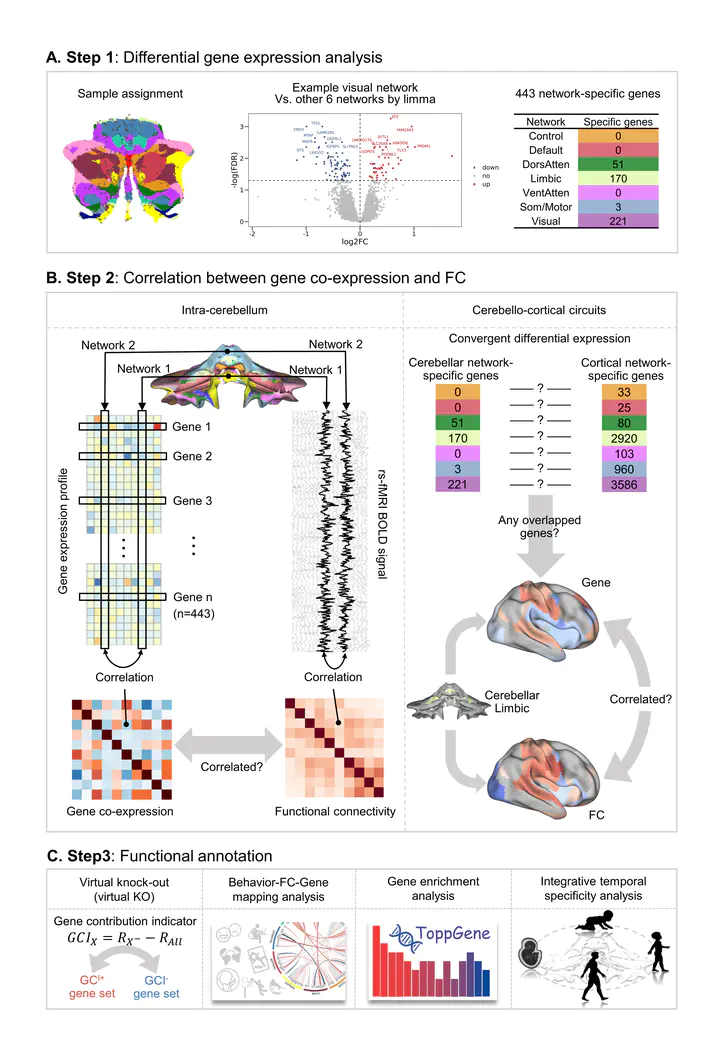Uncovering the Genetic Profiles Underlying the Intrinsic Organization of the Human Cerebellum
 Analysis pipeline
Analysis pipelineAbstract
The functional diversity of the human cerebellum is largely believed to be derived more from its extensive connections rather than being limited to its mostly invariant architecture. However, whether and how the determination of cerebellar connections in its intrinsic organization interact with microscale gene expression is still unknown. Here we decode the genetic profiles of the cerebellar functional organization by investigating the genetic substrates simultaneously linking cerebellar functional heterogeneity and its drivers, i.e., the connections. We not only identified 443 network-specific genes but also discovered that their co-expression pattern correlated strongly with intra-cerebellar functional connectivity (FC). Ninety of these genes were also linked to the FC of cortico-cerebellar cognitive-limbic networks. To further discover the biological functions of these genes, we performed a “virtual gene knock-out” by observing the change in the coupling between gene co-expression and FC and divided the genes into two subsets, i.e., a positive gene contribution indicator (GCI+) involved in cerebellar neurodevelopment and a negative gene set (GCI−) related to neurotransmission. A more interesting finding is that GCI− is significantly linked with the cerebellar connectivity-behavior association and many recognized brain diseases that are closely linked with the cerebellar functional abnormalities. Our results could collectively help to rethink the genetic substrates underlying the cerebellar functional organization and offer possible micro-macro interacted mechanistic interpretations of the cerebellum-involved high order functions and dysfunctions in neuropsychiatric disorders.